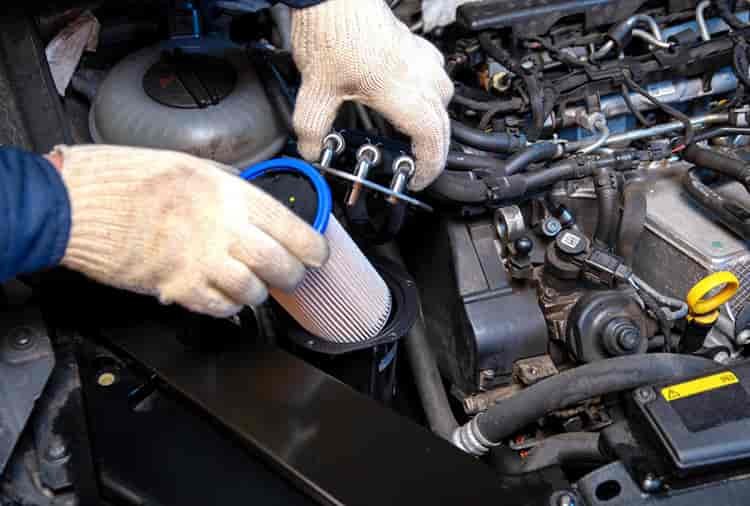Every Nissan Altima owner values smooth performance and dependable fuel efficiency. Yet one small part inside the fuel system can cause major trouble when ignored. The fuel filter plays a critical role in keeping the engine clean by stopping dirt and debris from reaching the injectors. When this filter becomes clogged, you may notice weak acceleration, rough idling, or even sudden engine stalling. The first step to preventing these issues is understanding the exact Nissan Altima fuel filter location. Depending on your Altima’s model year, the filter might be positioned under the car, near the fuel tank, or integrated inside the fuel pump module. This variation often leads to confusion among car owners trying to service their vehicles. In this complete guide, you will learn where to find your fuel filter, how to replace it safely, and how to maintain your Altima’s fuel system like a professional mechanic. With the right knowledge, you can extend your engine’s lifespan, improve mileage, and avoid costly repairs. Let’s begin by exploring how the Nissan Altima fuel system works and why its design has changed across generations.
Understanding the Nissan Altima Fuel System
Before locating the Nissan Altima fuel filter, it helps to understand how the fuel system works. The system starts inside the fuel tank, where gasoline is stored and pumped toward the engine. The fuel travels through lines and passes the filter before reaching the injectors. The filter keeps dirt and small particles from entering the engine, which protects both performance and fuel efficiency.
In older Altima models, the fuel filter is installed outside the tank. This design makes it easier to reach and replace during maintenance. For newer generations, Nissan redesigned the system to improve fuel economy and meet emission standards. The company built the fuel filter into the fuel pump assembly, which sits inside the tank. This sealed layout provides better reliability but also makes replacement more complex because the entire module must be changed.
Understanding these design changes helps you know where to look and what tools to prepare. It also explains why some Altima models allow simple DIY replacement while others require professional service. The next section will show the exact Nissan Altima fuel filter location for each model year, from early 2000s vehicles to the latest 2025 edition.
Nissan Altima Fuel Filter Location by Model Year (2002–2025)
The Nissan Altima has gone through many design changes over the years. Each generation uses a different type of fuel system, so the Nissan Altima fuel filter location also changes. Knowing the right location helps you find the part faster and plan any maintenance correctly.
For models made between 2002 and 2006, the fuel filter sits under the car near the rear passenger-side wheel. It connects to the fuel line and is easy to reach with simple tools. You can replace it without removing other parts.
For 2007 to 2012 Altima models, Nissan redesigned the fuel system. The filter became part of the fuel pump assembly, which sits inside the fuel tank. To access it, you may need to lift the rear seat and open the pump cover.
From 2013 to 2018, the design changed again. The fuel filter was sealed inside the pump module and could not be replaced separately. The same setup continues for 2019 to 2025 models. These versions use a closed fuel system with the filter built into the pump for better performance and lower emissions.
If you are unsure which design your Altima uses, check the owner’s manual or contact a Nissan service center with your vehicle identification number. This will confirm the correct Nissan Altima fuel filter location before you start any work.
How to Replace the Nissan Altima Fuel Filter Safely
Replacing the fuel filter on a Nissan Altima can be simple when you follow the right steps. Before starting, make sure the engine is cool and the car is parked on a flat surface. The process may differ depending on the Nissan Altima fuel filter location for your model year.
Begin by removing the fuel pump fuse and starting the engine. Let it run until it stops. This step releases pressure from the fuel lines and prevents fuel spray. Next, disconnect the negative battery cable to avoid sparks.
If your Altima has an external filter, look under the rear of the car near the fuel tank. You will see a small metal cylinder connected to the fuel lines. Use a wrench to loosen the fittings and remove the old filter. Keep a container nearby to catch any fuel that drips out.
For models with an in-tank filter, access it from inside the car. Lift the rear seat cushion to reach the pump cover. Open the cover and unplug the electrical connector. Then remove the locking ring that holds the pump module in place. Lift out the module and replace the filter or the entire assembly if needed.
After reinstallation, check the O-ring or gasket for damage and tighten everything securely. Reconnect the battery and turn the ignition to the ON position for a few seconds to build pressure. Start the engine and check for leaks.
Replacing the fuel filter correctly keeps your Altima running smoothly, improves fuel economy, and prevents engine problems in the future.
Common Fuel Filter Issues and Symptoms of Clogging
A clean fuel filter keeps your Nissan Altima engine running smoothly. When the filter becomes clogged, fuel cannot flow properly. This can cause several problems that affect how your car performs. No matter where the Nissan Altima fuel filter location is, the signs of a blocked filter are often the same.
The most common symptom is a loss of power when you press the accelerator. The engine may feel weak or slow to respond. Sometimes it hesitates when driving uphill or at high speeds. You might also notice that the car takes longer to start, especially after sitting for a while.
A clogged filter can also make your engine idle roughly. It can reduce fuel efficiency because the engine burns more gas to get the same power. In serious cases, the car may stall or refuse to start. You may even see the check engine light come on if the fuel system pressure is too low.
If you notice these symptoms, inspect the fuel filter and lines for dirt or damage. Replacing a clogged filter is a quick fix that restores performance and prevents damage to the fuel pump and injectors. Keeping your fuel system clean will help your Altima stay reliable for many years.
Maintenance Tips to Keep Your Altima’s Fuel System Healthy
Regular maintenance is the best way to keep your Nissan Altima fuel system in good condition. No matter the Nissan Altima fuel filter location, proper care helps your car run smoothly and prevents costly repairs.
Start by following the service schedule in your owner’s manual. For older Altima models with an external fuel filter, replacement is usually needed every 30,000 to 40,000 miles. For newer models with an in-tank filter, you can inspect it less often but still check it during major services. Using genuine Nissan parts helps the system stay clean and perform better.
Fuel quality also matters. Always fill up at trusted gas stations to avoid dirt and water in the fuel. Adding a fuel system cleaner every few thousand miles can remove deposits and keep injectors clear.
Good driving habits protect your fuel system too. Try not to let your fuel level drop below one-quarter of the tank. This helps prevent sediment from entering the fuel line. During regular checks, look for leaks, loose connections, or corrosion. Small repairs now can save you from bigger problems later.
With simple care and attention, your Altima’s fuel system will last longer, improve performance, and maintain fuel efficiency for years.
Estimated Replacement Cost and Service Options
Knowing the cost of replacing your fuel filter helps you plan maintenance more effectively. The total price depends on the model year and the Nissan Altima fuel filter location. Older models are usually cheaper to service because the filter is easier to reach.
For Altima models built between 2002 and 2006, the fuel filter sits outside the tank. Replacing it often costs between 70 and 150 dollars, including labor. The filter itself is inexpensive, and most repair shops can finish the job in less than an hour.
For newer models with the filter inside the fuel pump assembly, the price is higher. You may spend between 250 and 600 dollars depending on the year and local labor rates. Although this design increases cost, it lasts longer and improves reliability.
If you prefer professional service, visit a certified Nissan mechanic or dealership. They can confirm the right filter type and ensure that everything is sealed correctly after installation. If you enjoy working on your own car, you can also replace the filter yourself by following safety steps carefully.
Balancing cost, quality, and safety is important. Regular checks and timely replacements help prevent fuel system problems and keep your Altima performing like new.
Conclusion
Understanding the Nissan Altima fuel filter location is an important part of keeping your car in top shape. The fuel filter protects the engine by stopping dirt and debris before they reach the injectors. When the filter gets clogged, your Altima may lose power, waste fuel, or even stall.
Checking and replacing the filter at the right time helps your car perform better and last longer. Older models make this task easy because the filter is outside the tank. Newer models use a sealed system with the filter built into the fuel pump, which needs more care during service. Knowing the type your car uses helps you plan maintenance correctly and avoid expensive repairs.
Even small steps like using clean fuel, inspecting lines, and following the maintenance schedule make a big difference. If you have never checked your Altima’s fuel system, now is a great time to start. A clean filter and a healthy fuel system keep your engine running smoothly and your drives more enjoyable for years to come.

